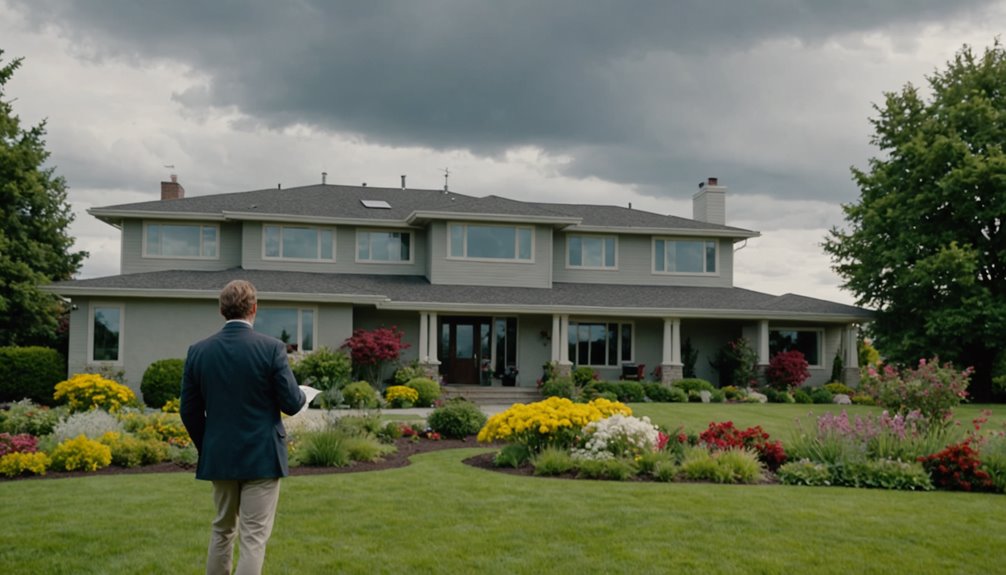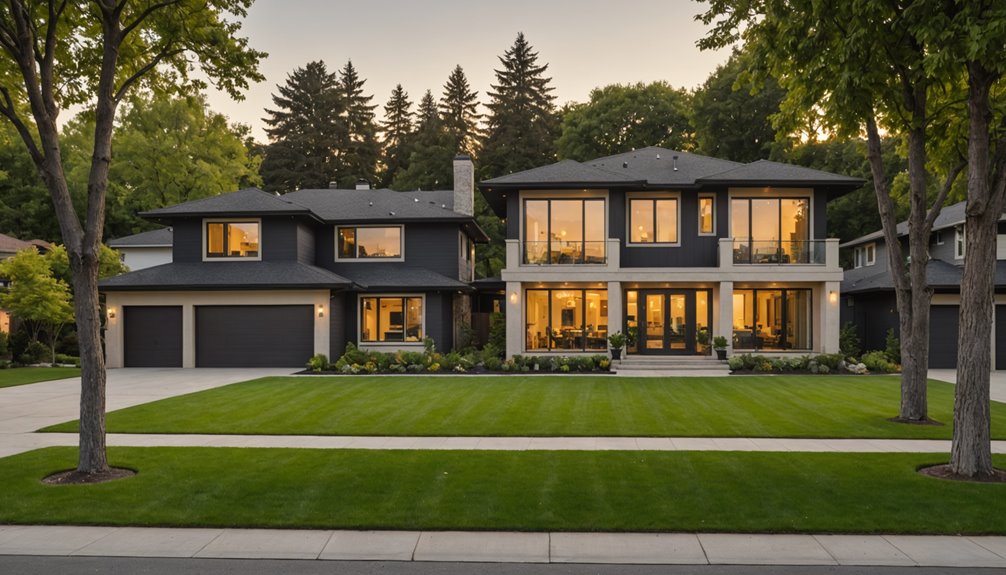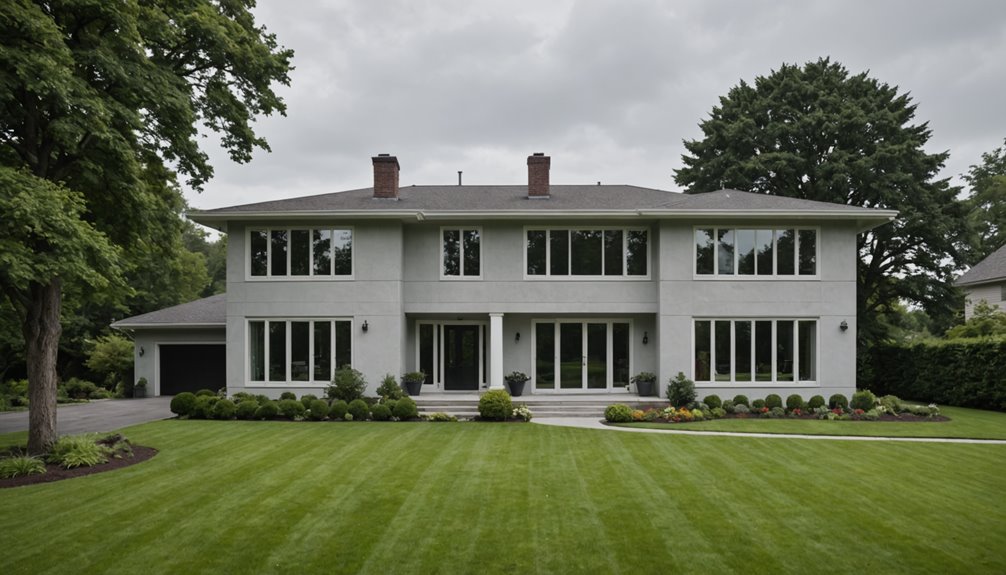Many sellers today want more for their homes than what buyers will pay. At the same time, buyers are making offers far below value, hoping for a “fire sale.” This back-and-forth creates a growing gap that leaves homes sitting on the market too long.
For example, a seller in Tampa listed their home at $500,000, but similar homes in the area sold for $450,000. Buyers weren’t willing to pay more, and the seller had to lower the price to get any offers. On the flip side, a buyer in Sarasota offered $350,000 for a home listed at $420,000—well below market value—and lost the chance to buy it.
Both sides need to stay realistic. Sellers should price their home based on what buyers are willing to pay, using a Comparative Market Analysis (CMA) prepared by an experienced real estate broker. Buyers should also review the CMA and make fair offers, rather than making lowball offers. Working together with a clear view of the market helps everyone move forward.
Key Takeaways
- Sellers expect asking prices to be higher, yet 34% of properties face reductions due to buyer resistance.
- A 9% gap exists between the median list price ($469,000) and the sale price ($431,000), indicating a disconnect.
- High mortgage rates, at 6.73%, deter buyers, widening the expectation gap between buyers and sellers.
- 44% of listings linger over 60 days, reflecting sellers’ overpricing amidst low demand.
- Affordability issues price out 100.6 million households, further straining buyer willingness to pay.
Understanding the Market Imbalance
While the U.S. housing market has historically experienced fluctuations, the current imbalance between sellers and buyers marks a considerable shift, with a 33.7% gap reflecting 1.94 million sellers against 1.45 million buyers, a difference of approximately 500,000 listings. This reversal, evident since November 2023, contrasts with the buyer-dominated trends of 2021 and 2022. High mortgage rates, averaging 6.73% in April 2025, alongside economic uncertainty driven by inflation and concerns about a recession, deter potential buyers.
Regional disparities amplify the issue, with Miami showing a staggering 197.7% seller surplus and West Palm Beach at 182%. For those seeking a place in this market, understanding these dynamics, where sellers outnumber buyers considerably, offers a shared perspective on maneuvering today’s challenging housing landscape together. Additionally, the forecast predicts a 1% price drop in home prices by the end of 2025, signaling potential challenges for sellers.
New Home Pricing vs. Existing Home Trends
Recent data highlights a notable divergence in housing market trends, with new home prices experiencing a consistent decline while existing home prices continue to rise. By Q1 2025, new home median prices dropped to $416,900, reflecting a 2.32% year-over-year decrease, whereas existing home prices climbed to $402,300, supported by constrained inventory. This contrast highlights shifting market dynamics, as builders adjust their pricing amid heightened supply, while a tight existing home stock sustains upward pressure on prices.
Additionally, the gap between new and existing home prices has narrowed significantly, with a mere $9,100 difference in Q4 2024. Understanding the importance of mortgage preapproval can further influence buyer decisions in this fluctuating market.
New Home Price Drop
As the housing market navigates a complex landscape in 2025, new home prices are experiencing notable downward pressure, a trend that contrasts with the existing home sector. With new home inventory at 481,000 units—the highest since 2007—and speculative homes 40% above pre-pandemic averages, oversupply is evident. Despite mortgage rates dipping to 6.65% in March, buyer activity remains low, with a gap between new listings (375,000) and pending sales (265,000).
This imbalance fuels price reductions, with 18% of April listings seeing cuts. According to the Zillow Home Value Index, the average U.S. home value stands at $367,711, reflecting a modest year-over-year increase of 1.4%.
Key pressures shaping this trend include:
- Inventory exceeding long-term averages by 40–50%.
- Total March inventory surging 19% year-over-year.
- Regional disparities, with the Mountain West facing steeper declines.
- Flat monthly price gains despite forecasted peaks.
Together, these signal a challenging market for sellers.
Existing Home Price Surge
Although new home prices face downward pressure, the existing home market in 2025 tells a contrasting story of persistent price surges. Existing home prices have climbed 4.8% year-over-year for six quarters, with the average U.S. home value at $367,711, up 1.4% annually, despite a 0.5% monthly sales drop to a 4.00 million annual rate. Tight inventory, 20-30% below historical averages, fuels this trend, as homeowners with low mortgage rates hesitate to sell.
Additionally, the median price for existing homes reached $414,000 in April 2025, reflecting the ongoing pressure on affordability.
Regionally, Western existing homes have a median price of $633,500, while the South offers affordability at $366,800. Despite a 2.0% year-over-year decline in sales, demand for resale homes remains robust, driving prices higher. This dynamic underscores a market where many still seek to belong through homeownership, even at heightened costs.
Seller Overpricing Challenges

While market conditions increasingly favor buyers, sellers face mounting challenges due to overpricing in today’s real estate landscape. Data reveals a stark disconnect: list prices rose 6.2% year-over-year, yet authentic sales growth lags at 2.5-2.7%, with a median gap of 9% between list ($469k) and sale ($431k) prices. Nationwide, 34% of properties see price reductions, particularly in the South and West, while 81% of sellers cling to expectations of securing asking prices or higher, often ignoring market feedback.
Understanding local realtor benefits can provide sellers with valuable insights to better align their pricing strategies with current market conditions.
This mismatch impacts everyone, but consider the shared struggles:
- Sellers anchor to past pandemic-era surges.
- Overpricing extends time-to-sell, testing patience.
- Relistings at 10% signal pricing missteps.
- Market shifts demand collective adaptation.
- Additionally, stagnant inventory persists, with 44% of listings remaining on the market for 60 days or longer.
Together, steering through these realities fosters understanding and resilience.
The Affordability Struggle for Buyers
Despite signs of a shifting real estate market, buyers across the United States grapple with unparalleled affordability challenges that hinder homeownership. Escalating costs, with median-priced home payments at $ 2.59 per month nationally and over $3,500 in California, price out 100.6 million households. Structural barriers, such as high property taxes and mortgage standards, exacerbate the struggle, as 74.9% of households can’t afford new homes priced at $459,826.
In California specifically, only 17 percent of households could afford the median-priced home of $846,830 in the first quarter of 2025, highlighting the severe affordability crisis. Additionally, prospective buyers should consider researching affordable neighborhoods to uncover hidden gems amidst rising prices.
| Factor | Impact on Affordability |
|---|---|
| Monthly Payment (National) | $2,590 for median-priced home |
| California Payment | Exceeds $3,500/month |
| Households Priced Out | 100.6 million nationwide |
| Interest Rate Hike (0.25%) | Prices out to ~1.1 million households |
Regional Variations in Housing Dynamics

As the housing market evolves, significant regional variations in dynamics reveal a fragmented landscape for buyers and sellers across the United States. National home price growth stands at 3.3%, yet a 14-percentage-point gap exists between top and bottom markets. Northeast regions sustain price premiums despite economic headwinds, while Florida and Arizona face risks of declines.
The shift to remote work has further influenced demand for homes, particularly in suburban and rural areas.
Key regional disparities include:
- Northeast markets defy trends with higher prices.
- Mountain West lags, with Hawaii down 4.4%.
- Cooling markets, such as Florida, offer price relief but pose challenges to rates.
- Buyer power rises 5.6% year-over-year, aiding affordability.
These differences highlight a divided market, urging communities to adapt strategies. With a national median of $375,000, understanding local trends fosters a sense of shared navigation through this complex terrain. In California, for instance, median home prices vary widely, with the San Francisco Bay Area reaching around $1.3 million, while more affordable regions, such as the Central Valley, stay below $400,000.
Price Forecasts and Market Predictions
Regional housing dynamics paint a varied picture across the nation, but attention now shifts to the broader outlook with price forecasts and market predictions for 2025. Analysts present a mixed view: J.P. Morgan and Wells Fargo anticipate a 3% price increase, while Fannie Mae projects a 1.7% rise. Conversely, Zillow foresees a 1.4–1.7% decline, driven by rising inventory.
HousingWire offers a middle ground with a 1.77% growth estimate. Inventory dynamics are shifting, with existing home stock up 20% year-over-year yet below historical norms, and new home stockpiles at their highest since 2007. This growing supply enables buyers to have more options, thereby heightening their price sensitivity. Meanwhile, rental demand, with single-family rents rising 3.2%, may further temper buyer urgency in this evolving market.
Impact of High Mortgage Rates

How are high mortgage rates reshaping the housing landscape in 2025? With 30-year mortgage rates averaging 6.71% in April and projections holding above 6% through year-end, affordability remains a critical barrier. Monthly payments for a $400,000 home now reach $2,550, straining budgets and sidelining novice buyers, while existing-home sales linger 20.3% below 2019 levels. This shared challenge affects many who aspire to join the homeownership community.
Key dynamics include:
- Purchasing Power: High rates and median prices at $403,700 limit what buyers can afford.
- Generational Gaps: Older owners with low-rate mortgages face less pressure than newer entrants.
- Market Stagnation: Homeowners Resist Selling to Keep Sub-6 % Rates.
- Economic Constraints: Persistent inflation curbs Federal Reserve rate relief. Additionally, understanding financial capacity is essential for buyers to navigate these challenging market conditions effectively.
Inventory Shortages and Oversupply Issues
High mortgage rates have undeniably tightened affordability, but the housing market also grapples with persistent inventory shortages and emerging oversupply issues in 2025. National inventory, though up 28.7% year-over-year, remains 20-30% below prior troughs, with existing home supply near record lows. Meanwhile, new and speculative homes hit levels not seen since 2007-2008, signaling builder caution amid weak demand.
Regionally, California and Arizona drive growth with 45% year-over-year increases, while Texas and Florida grow at a rate of 31%. A national 4.0-month supply suggests balance, yet many areas remain undersupplied. Oversupply risks loom in select markets, with speculative homes raising concerns.
By late 2025, an 18% inventory rise could ease shortages, fostering a shared hope for market stability. Additionally, the trend towards multigenerational living is impacting housing demand and preferences across the state, further complicating the market dynamics.
Buyer Behavior in a Shifting Landscape

What factors are shaping buyer behavior in the evolving housing market of 2025? Data reveals a complex landscape where affordability, mortgage rates, and shifting preferences drive decisions. New buyers, now accounting for just 24% of the market (down from 32% in 2024), face financial constraints, with 29% paying over the asking price due to competition.
Urban compact housing and co-living arrangements are gaining traction among younger buyers who seek community and cost savings.
Key influences include:
- Affordability Barriers: Financial hurdles prompt buyers to opt for entry-level properties.
- Rate Sensitivity: Even a 0.5% mortgage rate shift alters purchasing power.
- Urban Appeal: Proximity to amenities draws buyers to smaller, connected spaces.
- Strategic Moves: Buyers prioritize necessity, planning to refinance if rates drop.
Additionally, the rise of multigenerational living as a viable housing solution reflects changing buyer preferences for community and shared resources.
These trends reflect a collective adaptation to market challenges.
Bridging the Seller-Buyer Pricing Divide
Why does a persistent pricing divide between sellers and buyers continue to challenge the 2025 housing market? A stark seller-buyer imbalance of over 500,000, with a 33.7% surplus, fuels the gap, compounded by high mortgage rates averaging 6.73% and economic uncertainty. Inventory surges to 1.94 million active sellers against 1.45 million buyers, shifting influence to buyers.
Sellers, adapting to this situation, are bridging the divide with strategies such as record price cuts—23% of listings were adjusted in March 2025—and regional flexibility, evident in the South’s narrow $14,200 new-versus-existing price gap. As buyer empowerment grows amid declining bidding wars, sellers must align with market conditions. Successful pricing hinges on a thorough market analysis to discern the dynamics of a seller’s versus a buyer’s market. Together, steering through these dynamics can foster a shared path to fair pricing in 2025.
Frequently Asked Questions
How Do Online Valuations Distort What Buyers Will Pay?
Online home valuation tools often mislead sellers into setting unrealistic prices. These estimates usually fail to accurately reflect local trends or property conditions, resulting in a gap between listing prices and the actual prices buyers are willing to pay.
How Do Property Taxes Impact Seller Pricing?
Property taxes greatly influence seller pricing. High taxes often compel sellers to lower their asking prices to attract buyers deterred by added costs, aligning listings with market demand in tax-burdened areas to enhance community appeal.
What Role Do Real Estate Agents Play?
How can real estate agents shape market outcomes? They strategically mediate transactions, leveraging data-driven insights to align pricing with market trends, ensuring that sellers and buyers find common ground within a competitive and ever-shifting industry landscape.
Are Renovation Costs Affecting Seller Expectations?
Renovation costs are indeed influencing seller expectations. Data shows an average spend of $48,000 on remodels, yet many prioritize individual satisfaction over resale value, often overestimating the buyer’s willingness to match these significant financial investments.
How Do School Districts Influence Pricing Gaps?
Harkening to tales of academic Camelot, school districts markedly shape pricing gaps. Data reveals a 2.5% valuation increase for every 5% improvement in test scores, binding communities through shared aspirations for educational excellence and increased property value.
Do Seasonal Trends Affect Pricing Mismatches?
Seasonal trends greatly influence pricing mismatches. Data shows spring and summer surges in demand often raise prices, while winter lulls reduce competition, creating disparities. Understanding these patterns enables our community to navigate market challenges more effectively.
Conclusion
There are many reasons why sellers and buyers don’t see eye to eye—rising insurance costs, steep HOA fees, and high mortgage rates all play a part. A seller in Bradenton recently priced their home at $475,000 without factoring in a $500 monthly HOA fee, which scared away qualified buyers. On the other hand, a buyer in Palm Beach backed out after realizing the home’s insurance costs would push the monthly payment well beyond their budget.
These kinds of surprises create tension and delays. Sellers need to understand the full cost picture from the buyer’s perspective, and buyers should enter the process prepared with realistic expectations. A CMA from an experienced real estate broker can help both sides find common ground. Let’s understand.
Let’s work together to close the gap—reach out today for a personalized market analysis.
References
- https://abcnews.go.com/US/wireStory/sellers-outnumber-prospective-homebuyers-high-prices-mortgage-rates-122346678
- https://www.redfin.com/news/sellers-vs-buyers-price-impact/
- https://www.nahb.org/blog/2025/05/prices-for-new-homes-drop-as-existing-rises
- https://www.morningstar.com/news/business-wire/20250529161533/the-us-housing-market-has-nearly-500000-more-sellers-than-buyersthe-most-on-record-that-will-likely-cause-home-prices-to-fall
- https://www.realestatenews.com/2025/04/30/sellers-are-out-of-sync-with-buyers-on-pricing
- https://www.fingerlakes1.com/2025/05/30/housing-market-crisis-buyer-seller-imbalance-2025/
- https://www.jpmorgan.com/insights/global-research/real-estate/us-housing-market-outlook
- https://www.businesswire.com/news/home/20250529161533/en/The-U.S.-Housing-Market-Has-Nearly-500000-More-Sellers-Than-Buyersthe-Most-on-Record.-That-Will-Likely-Cause-Home-Prices-to-Fall.
- https://www.bankrate.com/real-estate/housing-market-2025/
- https://www.nar.realtor/sites/default/files/2025-04/2025-home-buyers-and-sellers-generational-trends-04-01-2025.pdf







